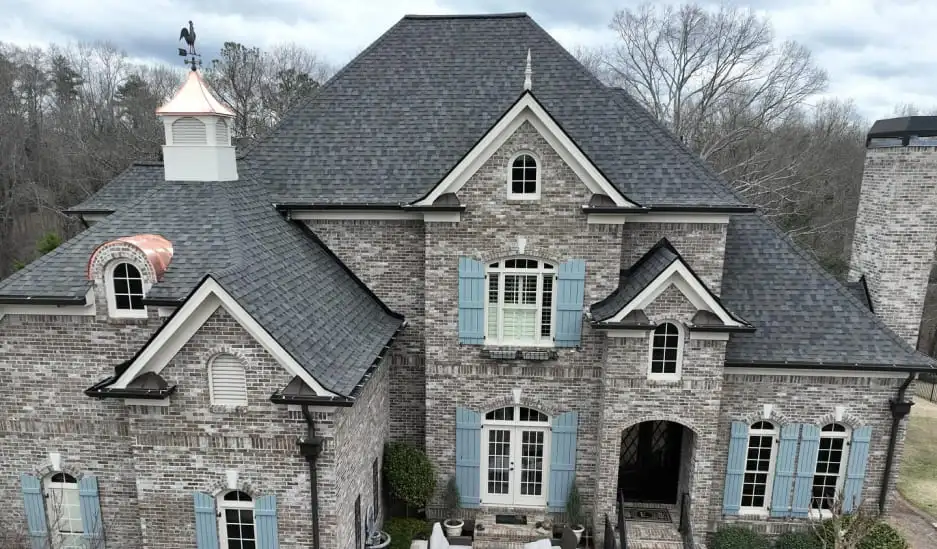 A Roof is More than Simply Shingles
A Roof is More than Simply Shingles
Most homeowners understand the need to keep a roof over their heads. But few understand how a roof actually works.
Although your roof appears to be a simple layer of shingles, it is actually a system of several parts, each with a unique function.åÊ Together, these parts form the roofing system that protects your home from sun, heat, wind, rain and snow.
The Parts of a Roofing System
The first component of a roofing system is the roof deck. The roof decks serves as the structural backbone for the other roof components. Typically, a roof deck is built by nailing plywood to the rafters / trusses of your house.
After the roof deck has been installed, it is covered by a layer of underlayment (more commonlyåÊ referred to as felt paper). The underlayment serves two purposes: 1) it provides temporary protection for the roof deck until the shingles can be installed.åÊ 2) it acts a backup weather barrier in case water penetrates the shingles.åÊ Underlayment is commonly made from asphalt-saturated, nonperforated organic felt materials.
The final major component of a roofing system is the roof covering, which acts as the primary barrier to weather.åÊ For most homes, the roof covering is a layer of asphalt shingles. The shingles are nailed through the underlayment to the roof deck.
Shingles are actually an engineered system all on their own. The typical shingle is made from three components: 1) an organic felt or glass-fiber mat for strength.åÊ 2) asphalt and fillers to block out water.åÊ 3) mineral granules to protect against impact, provide sunlight/UV protection and improve resistance to fire.åÊ At the same time, shingles can be made in a variety of colors and styles to complement your home’s dÌ©cor.
Last, but not least, all roofing systems include some type of flashing. Flashing is required where there are penetrations through the roof such as exhaust vents or pipes, where shingles run into a wall or chimney, or where a valley is formed by intersecting roof deck sections that are not parallel/planar.
Generally speaking, flashing is accomplished by inserting sheet metal between layers of shingles and along any intersecting parts, such as chimneys, walls, ducts or pipes. The end goal is to keep water from seeping in below the primary layer of protective shingles.
A Well Designed Roof
In addition to protecting your home from sun, wind, rain and snow, a well designed roof will also protect itself from heat and moisture damage. Excessive heat and trapped moisture can cause premature aging of both roof shingles and wood roofing materials.
By designing an effective system of roof ventilation, you can prevent heat and moisture from accumulating within your roofing system.åÊ Installing adequate roof/attic vents and roof ridge vents are two very effective ways to ensure your roof stays cool and dry, and lasts as long as possible.
In addition, properly designed and installed roof ventilation helps keep your home cool during those long hot Atlanta summers.
A Roofing System You Can Rely On
Findlay Roofing has been designing and building reliable, durable and long-lasting roofing systems since 1995. If you are in need of a new roof in Marietta, contact us today for a free estimate.
We look forward to working with you to design and build a roofing system that is best for you and your home.



